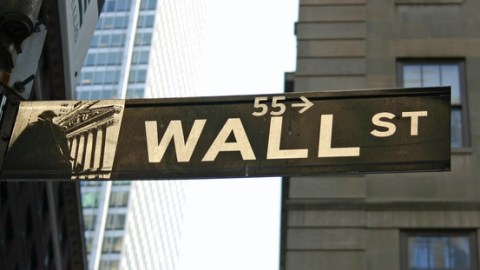Creative Derivatives: The Next Inside Job?

Starting April 1, Wall Street investment banks will begin trading a new type of exotic financial instrument in which the underlying cash flows of an artist’s creative works are re-packaged into off-balance sheet derivatives that can be sliced, diced — and re-sliced again — according to investor needs. According to Wall Street traders, these Creative Derivatives are a way to leverage the collective brilliance that led to the types of innovative mortgage derivatives that fueled the housing boom: they will transform the creative talents of writers, artists and musicians into highly-liquid financial instruments that will appeal to hedge fund billionaires. But are these Creative Derivatives instead the Next Inside Job leading to the next financial bubble?
In a series of midnight conference calls with analysts before the Creative Derivatives were set to being trading, Wall Street executives attempted to explain the move in a way that would resonate with Main Street, “After that film by Ferguson-what’s-his-name won the Oscar for Best Documentary, we decided that we needed to do something,” said one CEO. The CEO of another investment bank put it simply: “Remember those offshore funds with names like Raptor that we used to make crazy millions on offshore derivatives? Well, we’ve used the same financial engineering genius to create a similar vehicle for trading in the future incomes of poor starving artists.”
Derivatives, of course, are the fastest-growing business on Wall Street. Despite being reviled for being responsible for the creation of a vast $20 trillion “shadow banking system,” derivatives are simply financial instruments that are based on the performance of other markets. It’s sort of like fantasy baseball – you don’t own the players, you don’t own the team, you don’t own the league — but you get to buy players for your fantasy team. If your fantasy team does well, you do well. It kinda works like that. Think of these Creative Derivatives as a fantasy league for artists.
One of the initial deals, in fact, was the creation of synthetic call and put options based on the performance of writers in The New Yorker’s 20 under 40 Fiction List, where speculators are essentially able to bet on the future performance of the world’s best fiction writers. The marketing prospectus certainly looks enticing: “Let’s say you’re looking for a little exposure to the Eastern European literature market but want the risk-reward profile of a standard U.S. fiction writer. Well, we give you the chance to go long Obreht and Shteyngart and Bezmozgis while still capping your downside. We’ve got strike prices for Age 30, Age 35, Age 40, Age 45 – whatever your risk profile is, we can add a little toxic sludge to your investment portfolio.”
Initial plans called for at least three different derivative markets to be created immediately. An options market would enable investors to purchase the right, but not the obligation, to buy the future income streams of bestselling writers. A swaps markets would enable investors to swap foreign currency-denominated writer royalties for US Dollar-denominated writer royalties. Traders were excited: “Let’s say you’re long Garcia-Marquez and are getting paid pesos on a floating-rate basis, well now, you can swap that cash flow for fixed-rate dollars on Dave Eggers.” Finally, a futures market will enable investors to speculate on the future value of signed copies of writers’ books. Remember that film “Trading Places” with orange juice futures? Well, think of these creative futures as a way to exercise your inner Louis Winthorpe III – just make sure you have early access to that Florida crop report or you’ll lose everything.
Not surprisingly, the new Creative Derivatives left many in the creative world perplexed. “Does this have anything to do with iTunes?” asked many writers. Even Wall Street bankers were initially confused, “Wait a second. I’ve been spending the past 12 months slicing and dicing mortgages into ever finer tranches for those guys in Abu Dhabi – does this mean that I’ve got to develop a whole new sales pitch for literature professors at Yale?” Goldman Sachs officials declined to comment officially, with spokespeople only noting cryptically that, “Blankfein is playing fantasy baseball right now.”
Warren Buffett and Charlie Munger, both outspoken critics of how Wall Street has systematically siphoned off talent from the nation’s best universities to create arcane financial instruments to make millions for Wall Street CEOs offered only lukewarm support: “We’d rather be investing billions of dollars in lubricating oils right now and haven’t had time to review this with any type of due diligence.”
For now, at least, the creative world is holding its collective breath to see what happens next.





